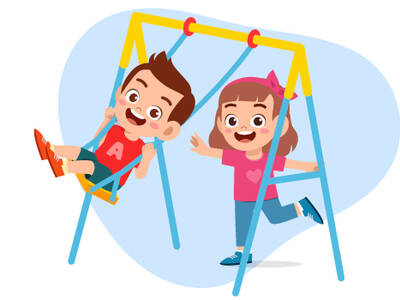
WHY IS IT IMPORTANT FOR MEN AND WOMEN TO HAVE EQUAL OPPORTUNITIES?
The topic of gender equality is insufficiently present in modern public perception. There are several reasons. First, it seems too complex to find its proper expression in the areas of social, economic and political life. It is difficult to grasp in full its importance for the successful development of societies. In addition, the topic is somewhat sensitive and conflicting for many societies, sharing conservative patriarchal features. It is easy to be distorted: its focus may get easily shifted in conservative environments, often hosting fears of changing established power relations, and with the excuse that gender equality leads to anomalies; it may become mistakenly linked to the sexual orientation of youngsters; it may end up being interpreted as a clash of genders, where women desire to take over and control men socially and within their families; it is often seen as a threat to traditional values of family and children, with the end result being the breakdown of family life and failure to raise children. Therefore, we will do our best to present our perspective to gender equality and explain why we consider it important to promote it.
Gender equality implies equal rights for women and men, girls and boys, as well as equal access to rights, resources, opportunities and protection. It would be a mistake to interpret it as the effort to make women and men equal in their behavior, needs, skills and aspirations. Equality is achieved when, based on specific needs, both genders get a chance to realize their full potential and rights without anyone being privileged or harmed.
The different treatment of women and men, resulting from gender stereotypes, affect all stages of our development in life. In early childhood, they are linked to different attitudes of adults towards children, depending on whether they are girls or boys. Boys, for example, are encouraged to be messy and violent, and girls are encouraged to be polite, caring and creative. Gender stereotypes in adolescence translate into differences regarding access to education, health care, entertainment, unevenly shared household responsibilities between girls and boys. In adulthood, gender inequality is expressed in different opportunities for work and professional realization, for receiving fair pay, access to resources, participation in decision-making. At retirement age, the differences are in access to care, attention and medical services.
When we think about gender equality, we may refer to a valid European instrument measuring achievements and challenges in this area across EU member states. The Gender Equality Index, launched by the European Institute for Gender Equality (EIGE), is an objective statistical tool measuring this complex concept through a set of socio-economic and political indicators in each country: labor market, remuneration, access to education and health care, participation in decision-making, discrimination and violence. Analyzing these areas provides a solid basis for drafting policies and legislation to ensure equal opportunities for women and men and putt them into practice.
|
Gender equality will benefit society at large, including all areas of social, economic and political life, by: • promoting economic, socially sustainable and equitable development; |
GENDER STEREOTYPES
Since birth, people have certain physical characteristics that are gender specific. Growing up, however, they learn how to behave as girls and boys when coming into contact with the world around. It is important to note that this identity is not constant, but is shaped by experience, social relations, and the wider context. This is the so-called process of socialization, which continues throughout life: each person acquires and maintains attitudes and patterns of behavior that allow him to become a valuable part of society, and that bring approval and recognition. Personal concepts, qualities, views, means of expression, habits, preferences, moral boundaries, lifestyle choices, they all belong here.
The Istanbul Convention (Council of Europe Convention on Preventing and Combating Violence against Women and Domestic Violence), as a key document in international legislation to address gender-based violence, defines gender as “the socially constructed roles, behaviours, activities and attributes that a given society considers appropriate for women and men”. These are social attributes and opportunities associated with being female and male and to the relationships between women and men, and girls and boys.”
 Every child learns how to behave as a girl or as a boy in and outside the family, while enjoying books and movies, when drawing, playing, or listening to stories. At an early age, children are confronted with different expectations, coming from their parents, loved ones, community and the wider environment. These expectations reflect prevailing views and do not always have rational explanations. It seems as if someone has written the rules for the world to exist, and everyone is supposed to live by them. These are stereotypical beliefs, characteristic of a certain group and performing several cognitive functions. They:
Every child learns how to behave as a girl or as a boy in and outside the family, while enjoying books and movies, when drawing, playing, or listening to stories. At an early age, children are confronted with different expectations, coming from their parents, loved ones, community and the wider environment. These expectations reflect prevailing views and do not always have rational explanations. It seems as if someone has written the rules for the world to exist, and everyone is supposed to live by them. These are stereotypical beliefs, characteristic of a certain group and performing several cognitive functions. They:
• systematize and simplify reality. When we do not consider the characteristics of each single individual, but assign him to a broad group instead, we can more easily place a large number of people in a general category. This allows us to simplify the world mentally and make it more predictable and easier to understand.
• protect values. Groups allow us to attribute common characteristics to all their members. When we do this, it is easier for us to "understand" them and compare ourselves to them.
• maintain social control. It is easier to create social norms that regulate the behavior of many people in a group than to control each person individually.
Although they feel like "empty talk", not based on facts, stereotypes are very real in their consequences.
|
In early childhood, gender stereotypes for girls and boys are linked to the choice of toys, of wearing clothes in a certain color, assigning different tasks, and of imposing different restrictions. Some of the most popular examples are the following: • Only girls play with dolls. |
Girls and boys, women and men have innate talents and abilities, and stereotypes can arrest their personal development, as well as their education and career development, and life opportunities in general.
 Gender stereotypes* are inherently linked to hierarchy, privileges, and empowerment. They are simplified generalizations about the characteristics, behavior, roles of women and men in society, applied individually to women and men to characterize them in a particular situation. This direct application of often erroneous generalizations to a specific situation results in shame, stigmatization, restriction, unfair treatment and restriction of rights and opportunities. While written law raises gender equality to a mandatory norm of the highest rank, often in real life there are other unwritten, but persistent rules, norms, ideas, and experience, affirming the traditionally established gender hierarchy, where men are entitled to more advantages, power and opportunities, receive more favorable conditions and attitudes, and have more control over various choices, decisions and attitudes. There are deep-rooted beliefs, ideas and attitudes about the different value of women and men, about their qualities, talents and abilities and they are constantly practiced. They lack objective, scientifically recognized basis and justification, yet they shape essential differences in the attitude towards women and men. Many of these stereotypes are based on the idea of confrontation, and exclusion (if certain traits, activities, positions, roles, characteristics are considered to be inherent to one gender, then the opposite set is assumed to be characteristic of the other gender, without any proof for underlying biological conditioning). The gender stereotyping of men and women has a profound impact on our society. Due to the advances made in recent years to establish equality between the sexes, society reflects fewer attitudes that support discrimination and inequality between men and women. However, even though we are liberated in our beliefs and attitudes, many of our actions are still influenced by gender stereotyping and misconceptions about men and women that have been passed down from one generation to another. In spite of their stated values, a surprising number of people today relate to each other following gender stereotypes. We adopt biased attitudes at an early age from observing the stereotypical roles that people in our families play. As we progress through school, these attitudes are reinforced by our classmates and peers. They are also supported by the unspoken biases of our teachers and by the arrangement of educational programs. The media is guilty of exploiting differences between men and women and exaggerating gender stereotypes to sell products. The residuals of these prejudices in our lives today portray men as masterful, powerful, paternalistic and uncommunicative, and women as emotionally responsive and communicative, yet childlike, helpless and incompetent. These distortions of are divisive, and interfere with our being intimate and loving in our close relationships. The social pressure exerted by these attitudes is as damaging to couple relationships as racial prejudice is to relations between people of different ethnic backgrounds. Each gender stereotype confuses people’s thinking about the differences between men and women. These timeworn attitudes overstate the qualities that distinguish men and women, and place themin artificial categories.
Gender stereotypes* are inherently linked to hierarchy, privileges, and empowerment. They are simplified generalizations about the characteristics, behavior, roles of women and men in society, applied individually to women and men to characterize them in a particular situation. This direct application of often erroneous generalizations to a specific situation results in shame, stigmatization, restriction, unfair treatment and restriction of rights and opportunities. While written law raises gender equality to a mandatory norm of the highest rank, often in real life there are other unwritten, but persistent rules, norms, ideas, and experience, affirming the traditionally established gender hierarchy, where men are entitled to more advantages, power and opportunities, receive more favorable conditions and attitudes, and have more control over various choices, decisions and attitudes. There are deep-rooted beliefs, ideas and attitudes about the different value of women and men, about their qualities, talents and abilities and they are constantly practiced. They lack objective, scientifically recognized basis and justification, yet they shape essential differences in the attitude towards women and men. Many of these stereotypes are based on the idea of confrontation, and exclusion (if certain traits, activities, positions, roles, characteristics are considered to be inherent to one gender, then the opposite set is assumed to be characteristic of the other gender, without any proof for underlying biological conditioning). The gender stereotyping of men and women has a profound impact on our society. Due to the advances made in recent years to establish equality between the sexes, society reflects fewer attitudes that support discrimination and inequality between men and women. However, even though we are liberated in our beliefs and attitudes, many of our actions are still influenced by gender stereotyping and misconceptions about men and women that have been passed down from one generation to another. In spite of their stated values, a surprising number of people today relate to each other following gender stereotypes. We adopt biased attitudes at an early age from observing the stereotypical roles that people in our families play. As we progress through school, these attitudes are reinforced by our classmates and peers. They are also supported by the unspoken biases of our teachers and by the arrangement of educational programs. The media is guilty of exploiting differences between men and women and exaggerating gender stereotypes to sell products. The residuals of these prejudices in our lives today portray men as masterful, powerful, paternalistic and uncommunicative, and women as emotionally responsive and communicative, yet childlike, helpless and incompetent. These distortions of are divisive, and interfere with our being intimate and loving in our close relationships. The social pressure exerted by these attitudes is as damaging to couple relationships as racial prejudice is to relations between people of different ethnic backgrounds. Each gender stereotype confuses people’s thinking about the differences between men and women. These timeworn attitudes overstate the qualities that distinguish men and women, and place themin artificial categories.
|
Some gender stereotypes that pit men and women against each other include: • Men are tough and powerful, not helpless and childish like women. |
|
In fact, there are many more significant things that men and women share in common than divide us. • Most men and women are feelingful and emotionally expressive. Most also struggle with their defenses against feeling. |
*Developed by Genoveva Tasheva, Manager of the Bulgarian Centre for Gender Studies
GENDER-BASED VIOLENCE AND DISCRIMINATION
Gender inequality is a barrier for women and men to freely express their full potential and to realize themselves fully. However, it does not affect both genders equally. In the spheres of economic and social development, inequality harms women to a greater extent, because it prevents them from developing their potential, from being successful in society, from having resources, from participating in decision-making. As a result, there is a greater risk of women and young girls falling into poverty, social exclusion, discrimination and violence. The imbalance in opportunities for worldwide impact puts women at a disadvantage and limits them in achieving stability and prosperity.
Gender-based violence is a phenomenon deeply rooted in gender inequality, and continues to be one of the most notable human rights violations within all societies. Gender-based violence is violence directed against a person because of their gender. Both women and men experience gender-based violence but the majority of victims are women and girls.
 Gender-based violence and violence against women are terms that are often used interchangeably as it has been widely acknowledged that most gender-based violence is inflicted on women and girls, by men. However, using the ‘gender-based’ aspect is important as it highlights the fact that many forms of violence against women are rooted in power inequalities between women and men.
Gender-based violence and violence against women are terms that are often used interchangeably as it has been widely acknowledged that most gender-based violence is inflicted on women and girls, by men. However, using the ‘gender-based’ aspect is important as it highlights the fact that many forms of violence against women are rooted in power inequalities between women and men.
The Istanbul Convention (Council of Europe, Convention on preventing and combating violence against women and domestic violence), frames gender-based violence and violence against women as a gendered act which is “a violation of human rights and a form of discrimination against women”. Under the Istanbul Convention acts of gender-based violence are emphasized as resulting in “physical, sexual, psychological or economic harm or suffering to women, including threats of such acts, coerican or arbitrary deprivation of liberty, whether occurring in public or in private life.”
It is also important to recognize that gender-based violence may be normalized and reproduced due to structural inequalities, such as social norms, attitudes and stereotypes around gender generally and violence against women specifically. Therefore it is important to acknowledge structural or institutional violence, which can be defined as the subordination of women in economic, social and political life, when attempting to explain the prevalence of violence against women within our societies.
Discrimination and unequal treatment of girls and boys come in many shapes and forms. They start in the family, with girls being brought up from an early age to do household chores in order to take care of their families in the future, and boys being taught to acquire income-generating skills and achieve social status. In many families, boys are not encouraged to go into the kitchen or help with household chores, while for girls it is perfectly acceptable and even desirable to spend their free time helping their mothers by caring for their younger siblings or for the elderly. All this shows that even within the family, children may have different opportunities, privileges and limitations.
The larger social circle outside the family home, with its formal institutions and informal groups, further contributes to spreading and strengthening stereotypes about women and men. This generates harmful practices of unequal treatment, discrimination and violence. They can be found at different levels, but in all cases lead to uneven ownership and control of resources and hence to dependence and violence. Women are more affected by these inequalities and this can lead to living lives controlled by family and partners, being deprived of their right to an opinion, and exposed to physical and emotional abuse, deprivation, restriction of liberty and the right to personal choice, sexual violence.
The gravity of the problem requires political and legislative solutions. The Istanbul Convention provides very important guidelines for individual countries in this direction. Article 4 „Fundamental rights, equality and non-discrimination”, item 2 says: „Parties condemn all forms of discrimination against women and take, without delay, the necessary legislative and other measures to prevent it, in particular by:
• embodying in their national constitutions or other appropriate legislation the principle of equality between women and men and ensuring the practical realisation of this principle;
• prohibiting discrimination against women, including through the use of sanctions, where appropriate;
• abolishing laws and practices which discriminate against women.”
Article 6 „Gender-sensitive policies” points out that “Parties shall undertake to include a gender perspective in the implementation and evaluation of the impact of the provisions of this Convention and to promote and effectively implement policies of equality between women and men and the empowerment of women.”
Special attention is paid to the education of children, since it has a strong impact on the way they perceive themselves and their peers and predetermines their behavior in their future lives as adults. That is why the Istanbul Convention seeks to encourage the adoption of certain values in the field of education such as gender equality, mutual respect and non-violence in interpersonal relationships, non-stereotypical gender roles, the right to privacy, awareness of gender-based violence and the need to counter it (Article 14). The founders of the Convention see this as an important aspect of the prevention of violence against women, as much of the attitudes, beliefs and behavioral patterns of children are shaped during their education.

Women and men have the same needs to live with dignity and to achieve economic and social progress. However, there are more barriers for women to do this - cultural and social practices that limit their development; overt or covert discrimination; manifestations of various forms of violence. Therefore, additional efforts and measures are needed to compensate for most of the restrictions that women face in order to participate equally in all spheres of the socio-economic and political life.
Related Articles
As young children develop, they begin to explore the meanings of being a boy or a girl. They learn about their roles by browsing…
Human rights are core standards acknowledging the need for dignified life for all people in the world. The Universal Declaration…
Fairy tales and the world of the child. How to use fairy tales to introduce the topic of gender equality in the education…









